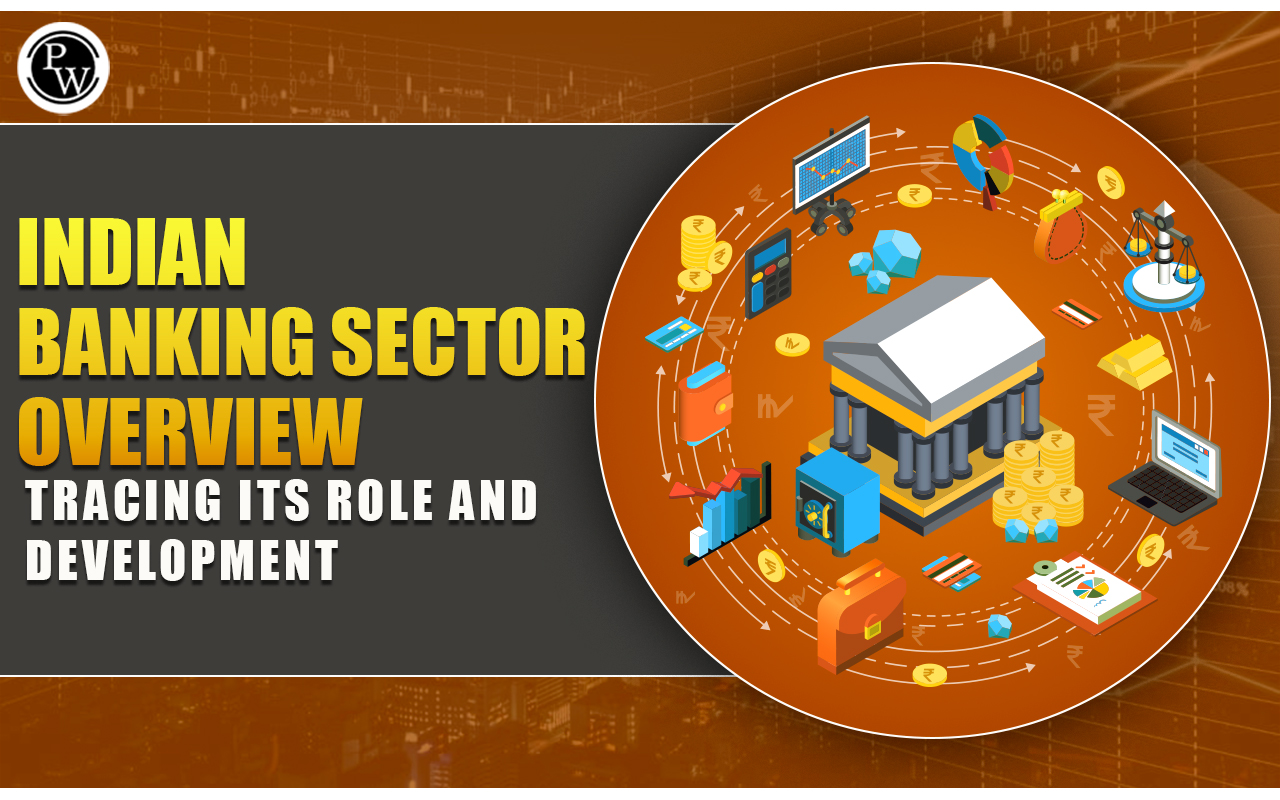“The Indian Banking Sector saw significant development due to various factors. Let us know more about our banking sector under this article.”
The Indian Banking sector plays a major role in our daily lives. We can easily make payment in no time with the help of our banks at our service for twenty four hours. Our banking sectors provide us with various facilities like credit, debit, loan facilities, safety, etc. Our banking sector contributes a lot to our economy.
However, our banking sector has seen major changes in the past few years. Let’s go back to the 2000s when there were so many technologies and facilities. We had to visit our bank branch to solve any of our minor or major issues. Now, we can easily pay, deposit, and avail of a lot of banking services remotely from our homes. Let us read more about the role of banking sectors in India and their development.
Evolution of the Banking Sectors in India

Earlier, there were many foreign banks during the British era. The nationalisation of many private banks in India took place between 1969 and 1980. The 20 private banks in India were nationalised. After this, there were many private banks and foreign banks in India. The entry of private banks in India increased the competition among major banking sectors in India.
Many private banks in India were established in India, such as ICICI Bank, HDFC Bank, Axis Bank, etc. They introduced healthy competition and thus increased the efficiency of banking sectors, efficiency and customer ease for various operations related to banks.
Important Factors of Private Banks in India
Check some of the major factors that improved the banking services in India.
- Due to the advancements in private banks in India, which increased the banking experience of users.
- The increased consumer demand for loans for education, automobiles and various other personal services.
- Banks provide important services like bank deposits, loan offers, and credit. Also, they offer wealth management, retail and corporate banking, insurance and investment services, etc.
- They keep our money safe in one place and follow major factors to match the standards of public sector banks in India.
Types of Banks in Indian Banking Sector
Some of the types of Banks in Indian Banking systems are given below.
1. Central Banks
In India, the Reserve Bank of India (RBI) is known as the Central Bank of India. It regulates all the other level banks in India and makes rules, guidelines, advisory, etc.
2. Commercial Banks
There are three major types of commercial banks in India.
- Public Sector Banks
- Private Sector Banks
- Foreign sector banks
3. Cooperative Banks
The cooperative members operate these banks for a common interest. They are also divided into two subcategories.
- Urban Cooperative banks
- Rural Cooperative banks
4. Regional Rural Banks
The Regional Rural Banks run in the country’s rural areas, ensuring the banking facilities reach every corner of the country.
5. Payment Banks
The payment banks are focused on providing basic banking services. These banks can allow a payment of upto 2 lakhs and offer ATM/ Debit cards, mobile payments, and other major banking services. Paytm is an example of a payment bank.
List of Important Indian Banking Sectors in India
Candidates can find the list of important private sectors in India below.
| Private Sector Banks in India |
|
Services offered by Indian Banking Sectors
The Banking sector in India provides a wide range of services to its customers. Check out some of the services below.
- Deposits: You can easily deposit your balance amount in a bank account. There are many types of deposit accounts, such as saving accounts, current accounts, loan accounts, fixed accounts, etc.
- Credit Cards: These are post-payment cards provided by the bank. In these cards, the customer must return the spend amount within a fixed interval.
- Debit Cards: With the help of a debit card, you can easily take your money out of the deposit accounts.
- Loans: There are many types of loans provided by banks at different interest rates, such as home loans, education loans, car loans, etc.
- Mobile Banking: With the rise of technology, we can avail of major banking services through our phones remotely on the web.
- Investment Services: The banking sector in India also provides various investment services like mutual funds and insurance to cover long-term financial goals.
Major Challenges Faced by the Banking Sector In India
The banking sector in India faces many challenges. Now, let us find them.
- Loan Failures: The majority of the time, when borrowers fail to return their loan amount, the losses are handled by the banks.
- Cyber Risks: The security system of banks needs to be very well optimized any vulnerabilities can be a major risk.
- Services Availability: Despite major technological advancements, many people still need access to major banking facilities.
- Skillset: Banks require a continuously skilled workforce, which is challenging.
- Technological Upgradation: While technologies are improving the banking experience for us, banks need to keep themselves updated with the latest technologies to provide good service to their customers. Banks also need to make sure that they are collaborating with the right technology and that there are no security concerns.
- Meeting Customer Expectations: Banks must keep themselves ready to answer any queries and difficulties faced by their users with a 24X7 support service.
Although there are many challenges, the banking sector in India has been the most important and reliant institution among the citizens.
Indian Banking Sectors FAQs
Which banking authority regulates the banking sector in India?
The Reserve Bank of India (RBI) is in charge of handling all the important banking sectors in India.
Which bank is the largest private sector bank in India?
HDFC Bank in India is the largest private sector bank in India in terms of assets.
Which bank provides services in rural areas?
The Rural Region banks provide various banking services in the rural areas.
Which was the first bank established in India?
The Bank of Hindustan was the first bank which was established in India.




